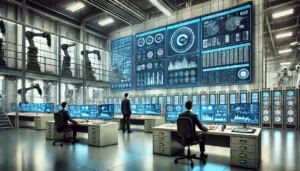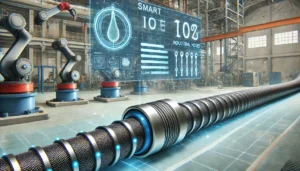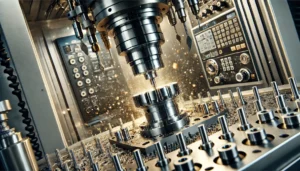The rapid introduction of new sensor systems helps boost precision, facilitation, and reliability making them crucial in contemporary measurement systems. Sophisticated devices have transformed the way data is collected and interpreted, enabling us to progress in fields like healthcare, industrial automation, environmental monitoring, and even consumer electronics.
Evolution of Sensor Technology
Traditional sensors were a little basic. They primarily concentrated on converting physical parameters into electrical signals, and that too only for measuring purposes. Now with the availability of advanced micro and nanotechnology, sensors have become more compact, more sensitive, and extremely capable of processing complex data. Such modern sensors integrate micro-processors allowing them to perform self-diagnosis, self-calibration, and communicate with other devices. This transforms them into smart sensors. This evolution paves way for new avenues for innovation, sensors now being more versatile and adaptive to diverse operational needs.
Types of Advanced Sensors
- Smart Sensors: With the ability of internally self validation, these smart sensors leverage embedded micro-processors to enhance their functionality. Additionally, they’re considered integral components of the Internet of Things, allowing for untethered interfacing.
- Nanosensors: Nano sized sensors with the use of special nanomaterials allow for high sensitivity and specificity due to their unique physical structure. These sensors are great assets in the medical field such as environmental monitoring, and even for detecting chemical or biological agents.
- Quantum Sensors: Employing techniques from quantum mechanics, like superposition and entanglement, quantum sensors work around classical limitations and help achieve precise measurements. They find some usage in magnetic field detection, positioning systems, as well as microscopy.
Applications in Contemporary Measuring Instruments
- Healthcare: With advanced sensors, medical diagnosis and patient monitoring have reached new heights. In tool-assisted surgical operations, sensors can monitor and so maintain low levels of pressure, thereby reducing chances of harm. They also increase the effectiveness of imaging technologies used to find abnormalities, which allows for improved diagnosis of a much wider range of conditions.
- Industrial Automation: During manufacturing, automated sensors keep track of temperature and pressure as well as flow rates to make sure the processes stay within the limits. Such continuous monitoring improves the quality of products, reduces waste, and increases productivity.
- Environmental Monitoring: Sensors used for environmental purposes monitor variables like the quality of air or water, radiation emissions and weather changes. Collected information is useful in evaluating the state of the environment, potential hazards, and environmental regulations.
- Consumer Electronics: New generation sensors made it possible for smartphones and other wearable devices to have features like motion detection, heart rate measurement, and automatic lighting, all of which greatly improve user experience.
Benefits of Smart Sensor Technology
- Enhanced Accuracy and Precision: Smart sensors and equipment provide high-value data, which allows them to be used for precision measurements especially for medical diagnostics and industrial quality assurance.
- Miniaturization:The trend of miniaturization makes it possible for smaller sensors to be built, which enables development of new portable and wearable devices.
- Real-Time Data Processing: Sensors with built-in processing can perform data analysis at the location of measurement itself thus, sensors reduce or eliminate external processing time.
- Connectivity: Most modern sensors are built with microcontrollers and wireless communication interfaces therefore, they can be integrated into large systems and networks which is a necessity in sensor IoT.
Challenges and Future Directions
Smart equipment faces problems such as learning of algorithms for accurate processes without consuming a lot of power or energy, and protecting data in various environments. Ongoing research addresses the challenge to build smart sensors with adequate sensitivity, strength and energy saving features. The future of sensor technology lies in the integration of flexible and wearable sensors and AI. AI-powered systems can interpret sensor data to provide actionable information, i.e. to predict possible defects. Thus, sensor-embedded systems can continuously improve processes for minimal production downtime in all industries.
Conclusion
Sophisticated sensors have become essential parts of advanced measurement devices and provide opportunities for innovation in many industries. Certainly, as technology advances, this will become more critical as systems become more intelligent, adaptive, and efficient. The capability to deliver knowledge at the right moment and the ability to integrate into complex systems guarantees their set position at the cutting edge of changes that foster the development for multitudes of industries. The same situation that a complex definition sensor leads to an increased focus on the studies and manufacture of advanced sensors in modern measurement devices.










